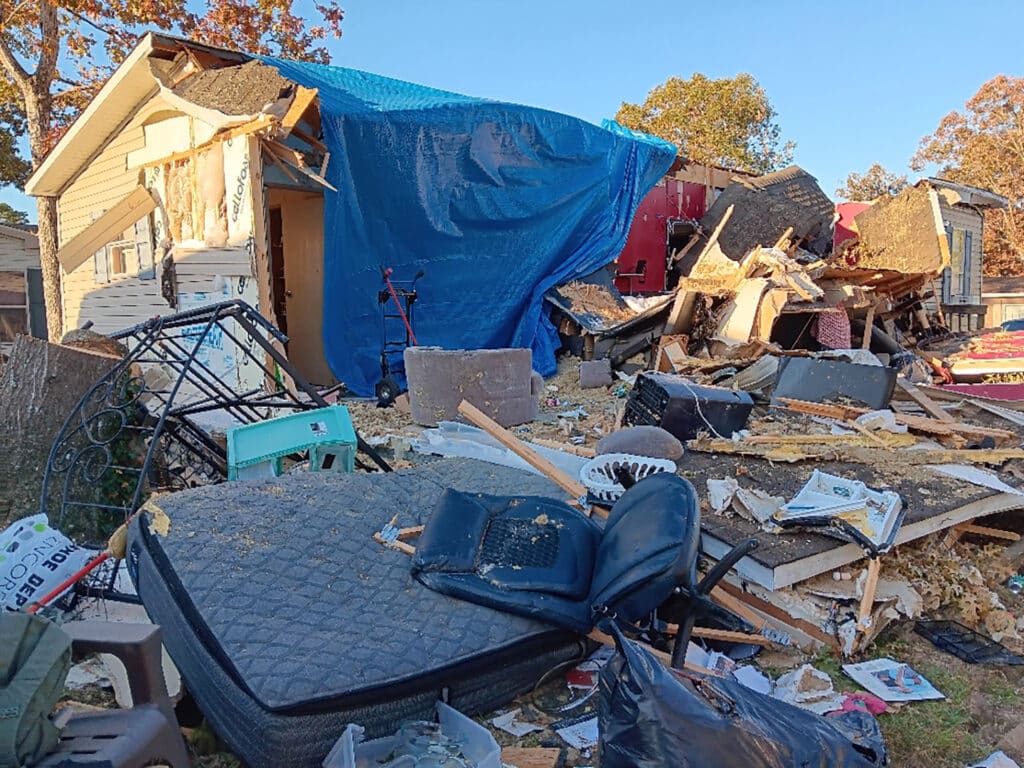Ever been in an older building where sections of it were impossible to heat or cool to a comfortable level? Many churches have areas that have been subdivided or added on to so that they irreparably alter the original HVAC scheme. Adding a wall here or a wing there sounds good, maybe easy, but unless it is done deliberately, the Mary-Martha class will be wearing parkas in June and July, and perhaps praying the imprecatory Psalms against the facility manager. Freezing the ladies’ class was never part of the plan and yet many churches have rooms that do just that.
The structure of organizations can accumulate the same sort of problems. The opportunities of today suggest answers that become the crises of tomorrow, world without end. Look at the discernible layers in church policies or bylaws and you might see an example. In that place where the typeface changes, you’ll often find newer rules spawned by a need from long ago but that don’t exactly jibe with earlier or later regulations. No one intended the confusion, but still…
So we shouldn’t be surprised to see it happen in the SBC. Convention messengers adopted a report in 2010 that was intended to place greater focus on missions. The Great Commission Resurgence Task Force report contained suggestions of great import to all levels of our denomination but particularly the state conventions. And all this was done in the hope that more emphasis would be placed on church planting and overseas missions. Of course that would require more money allocated for those purposes. And since teaching stewardship to our church members is a long-term solution, reallocating existing funds has been the primary focus of our discussion since 2010.
I’m hopeful that some of these changes will bear good fruit. In the midst of them, I’d caution against unintentionally damaging tools or systems that undergird every cooperative thing we do. Mostly because of the changes being made by NAMB, every single state convention is being affected by the attempt to focus more resources on church planting and overseas missions. A few conventions are cutting staff to facilitate missions work beyond their boundaries. Others are responding to their own task forces by incrementally raising the percentage of CP giving they send out of state. In some cases these increases are more apparent than real but overall our funding emphasis is moving toward the ends of the earth. One state convention has cut its allocation to affiliated institutions within the state so they can designate money to the International Mission Board. As an additional part of their reprioritizing, they asked in February for the SBC Executive Committee to shift money from the SBC seminaries to the IMB. That suggestion was politely and appropriately tabled.
I have some concerns that the urgency of shifting our resources along with the urgency of maintaining some portion of the state conventions’ ministries within their own “Judeas” will result in a version of our Cooperative Program that won’t work anymore. Some state conventions can, for example, exempt part of their undesignated receipts from the amount eligible for sharing with the remainder of the SBC. This exemption makes it appear that they’ve increased their giving when they haven’t actually done so. Money used for the state paper or missions education or CP/stewardship promotion might come off the top so that instead of giving 40 percent of a larger amount, the convention is giving 50 percent of a smaller amount. The idea, which isn’t new, is that some state convention ministries are already of benefit to both the national and state denomination. The point is arguably true and appealing to more conventions as pastors clamor for conventions to approach a 50/50 split with the SBC. The way the story may be understood among the constituent churches is that the convention has increased something it hasn’t. Where that happens, the definition of the Cooperative Program has subtly shifted and its credibility has been degraded.
A second concern is that we would impulsively defund crucial aspects of our ministry, the seminaries, for example, in favor of quick increases in church planting or overseas missions. This is a shortcut that will only work for a little while. If Jesus tarries for a decade or two after we make such a move, we’ll be faced with a shortage of trained Southern Baptist church planters and missionaries. Maybe we’ll have trained people and maybe we’ll have people who understand Southern Baptists ready to go, but we’ll have fewer who are both. Cut 10 or 20 percent from the money available to the seminaries and you’ll have fewer trained graduates because you’ll have between one and three fewer SBC seminaries. The smaller of these very CP-dependent institutions have very little margin to allow for funding cuts.
Whether it is through increased designations, redirecting funds, or any other action that protects one institution at the expense of our whole missionary enterprise, we’ll regret weakening the Cooperative Program. It’s no comfort to think that we’ll only regret it after it is too late to rebuild it.
The Cooperative Program is nothing special unless it is an undesignated distribution to a unified budget. Efforts to change this definition have been around for 20 years or so, but where that view has prevailed, the result has been something not actually the Cooperative Program and something less Southern Baptist.
We’re Baptists because of what we believe about God and his gospel. We’re Southern Baptist because of how we’ve committed to cooperate for world evangelism. I once saw a sign for a fine and successful Independent Baptist church that included what looked like the SBC logo (globe with a cross superimposed on it and resting on an open Bible) except the globe was deleted. It was the Word and the gospel but without a global vision. For my church, the global vision is addressed somewhat by church members who go and more thoroughly by our support of the Cooperative Program. There aren’t many benefits to being a Southern Baptist unless you address the Great Commission through partnership with other Southern Baptist churches—the Cooperative Program in other words.














